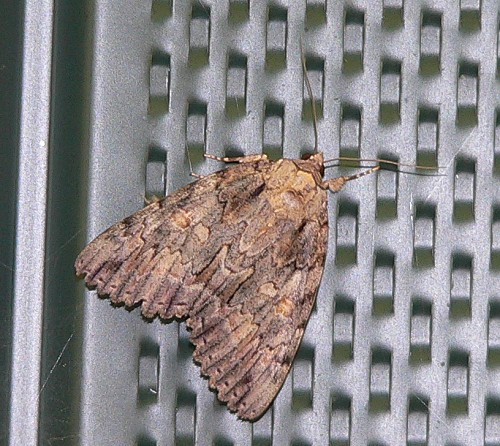We finally got enough rain to fill up the frog pond – I’ve been waiting since last fall for it to fill with enough water that it would cover the plastic liner. We had 4 ½ inches of rain last week – 4 inches of it in one night – and the pond finally looks like a pond instead of a puddle.

Our big project this week was to start cutting down some of our dying aspens. I started girdling aspen in the spring of 2005, and a lot of the trees I did then are dead. This is a grove of mostly dead aspens that’s adjacent to a couple of prairie remnants and an overgrown savanna that we mowed out in the fall of 2004.
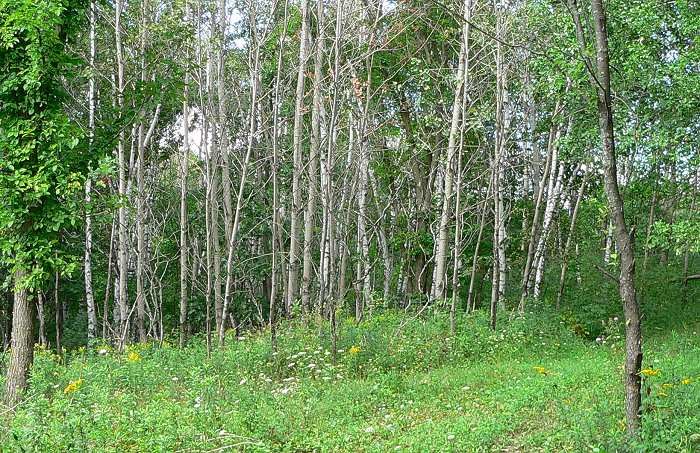
Eventually we hope to clear all these trees, and have a large contiguous area of prairie and savanna. There are still prairie plants growing under the aspen trees so I’m hopefull that the area can be restored.
We spent a couple days clearing trees and building a huge brush pile in the woods. Here’s the result of all our work – it’s still hard to see the difference. There are a lot of trees left to cut!
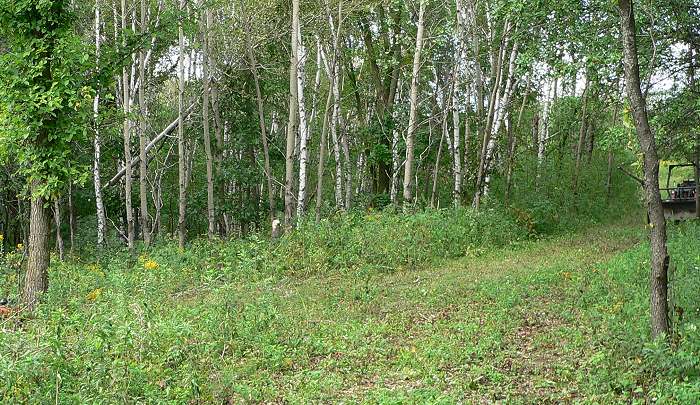
Here’s the pile of brush we made.

We’ve decided that it makes more sense to make brush piles in the woods and let them decompose naturally. We used to burn the piles, but it was a lot of work and made a big bare spot in our planted prairies, which we then had to replant. Now we just pile up the brush, let the animals use it for a few years, and by then it’s almost gone. We do pile up any birch logs we cut for our neighbor, Danny, who burns them in his furnace in the winter.
This is migration time for the hummingbirds. The feeders each have 6 feeding ports – sometimes all 6 are full and there are 3 or 4 more birds hovering, waiting for a chance to eat. They’re more cooperative now than during the nesting season, but they still don’t really like being so close to each other. When a new bird approaches the feeder it startles the ones who are eating and they all rise up and buzz a little before they settle back down to eat some more.
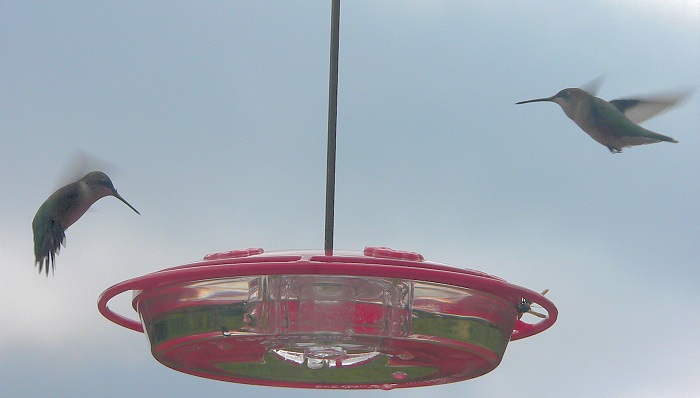
We have three humming bird feeders, and they’re all very busy right now. I put up an extra feeder when we go away for a few days; otherwise they run out of food.
Scott Weidensaul had an interesting comment about hummingbird behavior during migration on a Pennsylvania birders listserve:
“ By banding and color-marking the hummingbirds in my yard in
Schuylkill County, I realize I have near-complete turnover every day
or two in late August, as hummers leave and new ones appear …”
We must feed an amazing number of hummingbirds on their trip south for the winter.
I found a new plant species for Buffalo County (for the Stevens Point herbarium). It’s an orchid that’s growing in the wet end East Center Valley. It’s called Fen Orchid, or Green Twayblade (Liparis loeselii). Fen Orchids are usually found in wet places, and they may be more common than the records show – they’re small and easy to miss. They bloom in June and July, so the ones I found had seedpods, not flowers. I’ll check back next summer and see if I can see the greenish white blossoms.
Fen Orchid
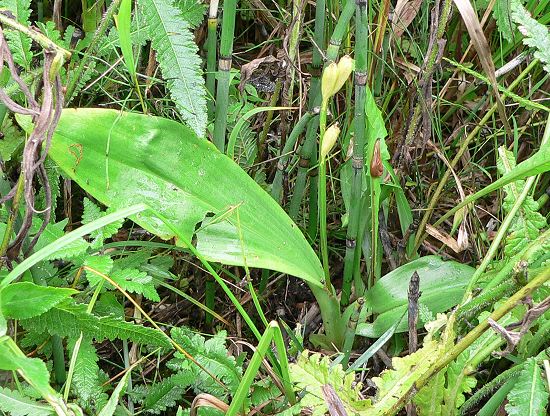
Here are a couple views of the wetland close to the area where the Fen Orchid is growing. The most common plant here is Swamp Betony (Pedicularis lanceolata) – it has white snapdragon like flowers and is partially parasitic on other plants – probably grasses. The bright blue flowers are Blue Lobelia (Lobelia siphilitica).
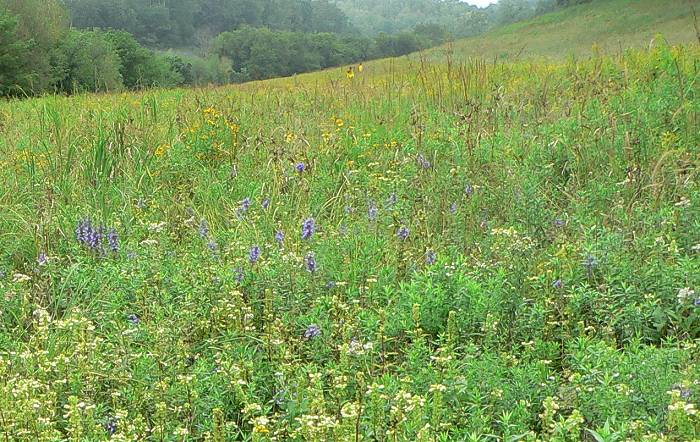
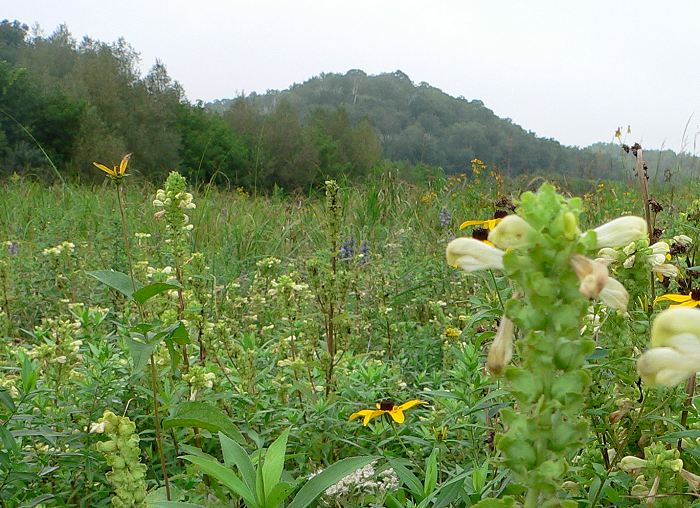
Another part of the wetland has flowers with bright jewel-like colors right now. All these plants are blooming in one very small area:
Blue Lobelia (Lobelia siphilitica)
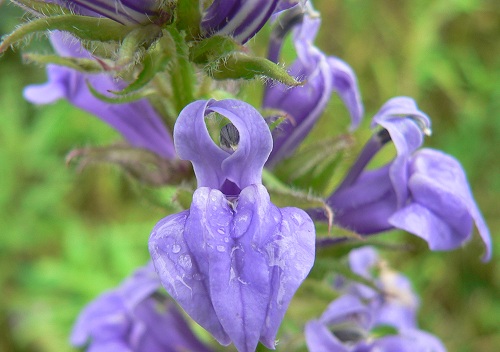
Jewelweed (Impatiens capensis) – you can see the water droplets shining on the leaf behind the flower. They may be the reason this plant is called “Jewelweed”.
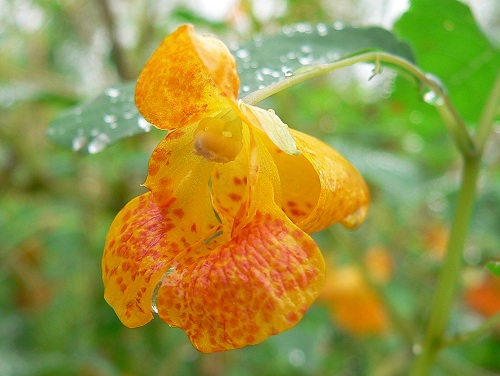
Sneezeweed (Helenium autumnale)
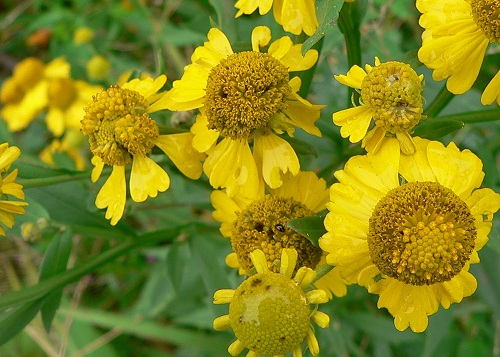
Flat-topped Aster (Aster umbellatus)

Common Agalinis (Agalinis tenuifolia)
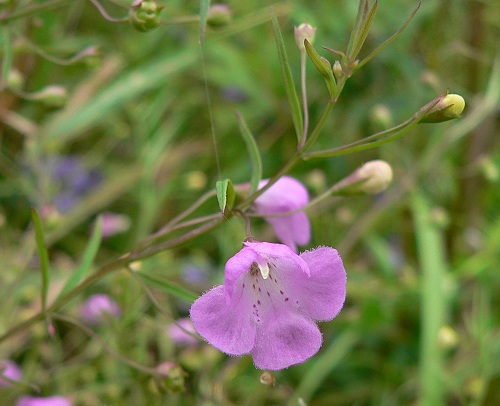
Indian Grass is blooming now in all our prairies. It’s a warm season grass – it does most of it’s growing in the mid to late summer when the weather is warm. It’s the most common grass in our tall grass mesic (medium moisture) prairies. The bright yellow in the flowers are the stamens hanging down to let the pollen get carried away by the wind.
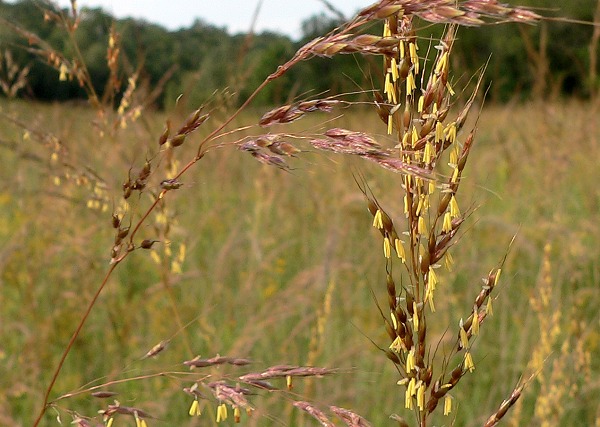
Rough Blazing Star has also started blooming. It’s blooming in some of our planted prairies, but the best displays are in the remnants. Here I am photographing some of the plants in the Knife Edge Prairie.
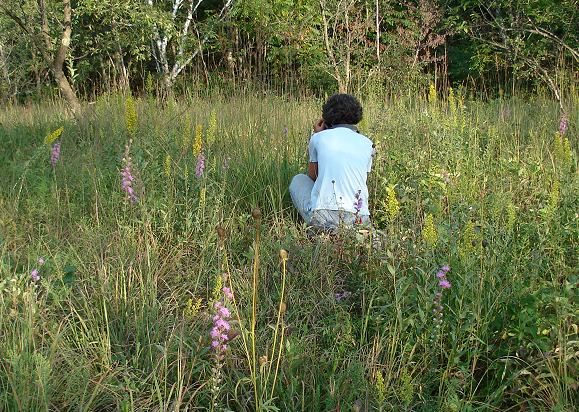
Usually Blazing Star flowers are magenta, but there are a few white flowered plants in this prairie.

Here’s a bright colored grasshopper that had found a refuge in a seed head of Queen Anne’s Lace.
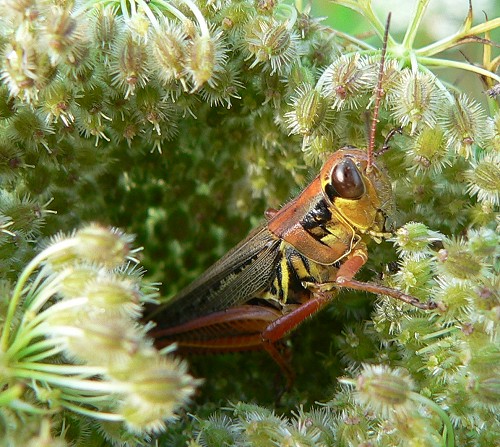
This is a Prairie Wild Onion in West Center Valley Prairie.
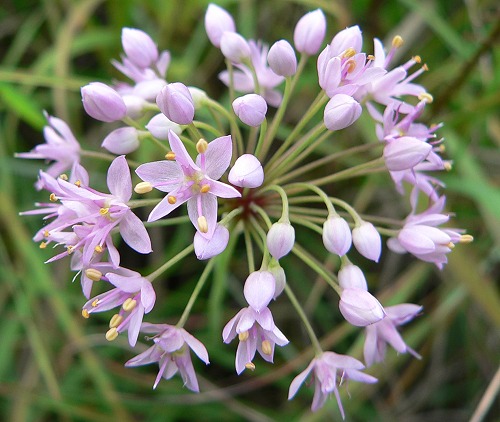
We watched Common Nighthawks migrating over our valley on a couple of nights. One evening there was a flock of about 20 over one of the high prairie fields. The next afternoon I saw a larger flock – 100 to 150 birds – over Center Valley.
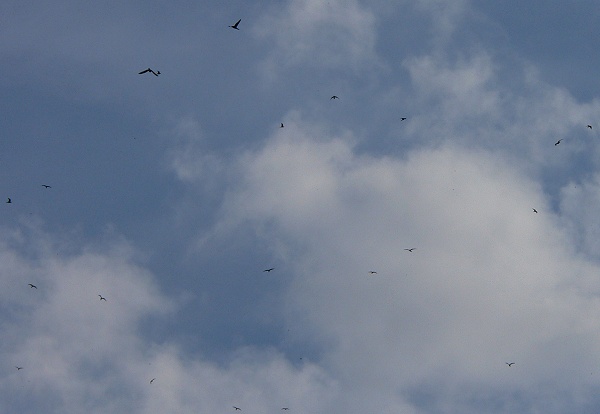
And this is another Catocala Moth (Catocala sp.) that was resting under the eaves of our house. Margo has told me that you can gently pull aside the upper wings and get a look at the bright colored underwings without disturbing the moth. I’d like to try it, but this one was too high for me to reach.
